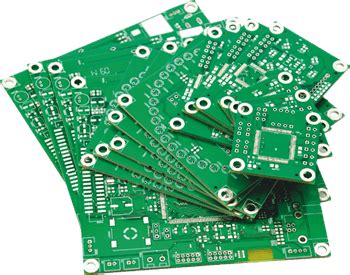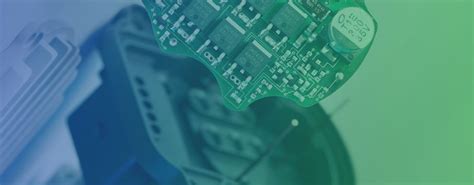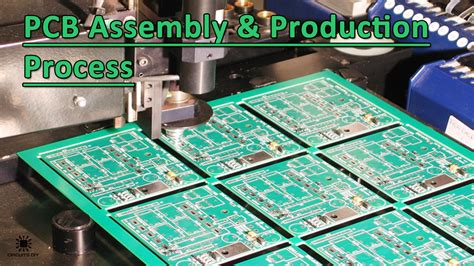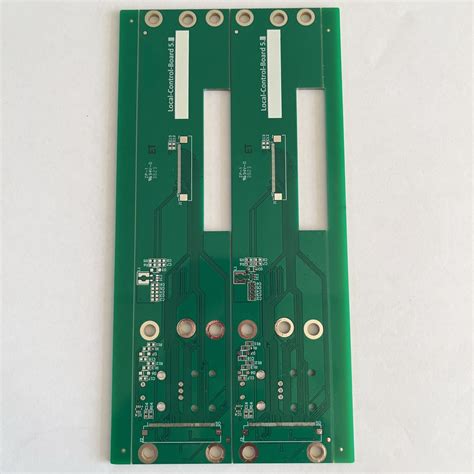Microtek Inverter PCB Board Pricing Guide 2024

Key Takeaways
When evaluating Microtek inverter PCB board options, understanding price determinants and quality markers is crucial. PCB manufacturing costs directly influence retail pricing, with factors like material grade, production scale, and warranty terms creating noticeable variations between models. For example, higher-capacity boards (3kVA–5kVA) often incorporate advanced thermal management, which may justify a 15–20% premium over entry-level units.
Tip: Always cross-reference PCB manufacturing companies’ quoted rates with after-sales support terms. A lower upfront cost might omit critical warranties or replacement guarantees.
You’ll notice 2024 pricing reflects tighter supply chain controls, with lead times for specific models shortening by 10–12 days compared to 2023. However, PCB manufacturing business logistics still impact regional stock availability—urban centers typically receive 48V/5kVA variants faster than rural areas. To maximize savings:
- Target off-season purchases (April–June) for discounts up to 20%
- Verify authenticity certificates when suppliers advertise “below-market” rates
- Prioritize vendors offering free diagnostic tools with bulk orders
While comparing PCB manufacturing cost structures, remember that certified recyclable materials add 8–12% to base prices but extend product lifespan by 3–5 years. This trade-off becomes critical when budgeting for industrial-scale energy systems versus residential setups.
Lastly, real-time inventory trackers on distributor portals now provide 85–90% accuracy, reducing the risk of delayed projects. Pair this with warranty portability checks (especially for cross-state installations) to avoid hidden compliance fees.

Microtek Inverter PCB Board Price Trends for 2024
Understanding price trends for PCB manufacturing components like Microtek inverter boards requires analyzing broader industry shifts. In 2024, global supply chain adjustments and fluctuations in raw material costs—particularly copper and fiberglass—are influencing PCB manufacturing costs across brands. For Microtek, this translates to a moderate price increase of 5-8% compared to 2023, though strategic partnerships with PCB manufacturing companies have helped mitigate steeper hikes.
You’ll notice pricing varies by capacity, with high-wattage models (5kVA+) seeing sharper adjustments due to complex circuitry and higher-grade materials. However, advancements in automated PCB manufacturing business practices are streamlining production for mid-range models, stabilizing prices for 2kVA–3kVA units. Seasonal promotions—especially during pre-monsoon months—often offset these trends, offering temporary reductions of up to 12%.
When evaluating costs, consider how geographic factors play a role. Boards manufactured in regions with lower labor expenses may appear cheaper initially, but shipping delays or import duties could negate savings. Instead, prioritize suppliers with localized inventory and transparent PCB manufacturing cost breakdowns. Microtek’s tiered warranty system (1–3 years) also impacts long-term value, as extended coverage often justifies marginally higher upfront prices.
Finally, market competition is driving innovation. Smaller PCB manufacturing companies are adopting energy-efficient processes, pressuring established players like Microtek to balance quality with affordability. Monitoring quarterly price lists and subscribing to distributor alerts can help you capitalize on short-term dips while aligning purchases with 2024’s evolving trends.

Comparing Microtek PCB Board Models: Features vs Cost Analysis
When evaluating Microtek inverter PCB boards, you’ll notice that PCB manufacturing standards play a critical role in balancing performance and affordability. Models like the EcoPower 850VA and ProSeries 1500VA highlight this balance—the former prioritizes cost efficiency with streamlined circuitry, while the latter integrates advanced surge protection and modular designs. Understanding how PCB manufacturing companies optimize these boards helps explain pricing variations: higher-grade materials and multi-layer designs in premium models increase PCB manufacturing cost by 15–25% compared to entry-level options.
For instance, the EcoPower series uses single-sided PCBs with basic thermal management, making it ideal for low-load applications. In contrast, the ProSeries employs double-sided boards with reinforced copper traces, which enhance durability but add to production expenses. If you’re managing a PCB manufacturing business, these distinctions matter—economies of scale reduce per-unit costs for high-volume orders, but specialized features (like IoT compatibility in newer models) may justify higher upfront investments.
You’ll also find that warranties correlate with PCB manufacturing quality. Models with 3+ years of coverage often include industrial-grade components, reducing long-term replacement risks. To avoid overspending, match the board’s specs to your usage: a 600VA PCB with basic load regulation might suffice for residential needs, while commercial setups benefit from the ProSeries’s overload protection.
Finally, don’t overlook vendor partnerships. Reputable PCB manufacturing companies often bundle discounts with bulk purchases or extended service agreements, softening the impact of higher initial costs. By aligning technical requirements with budget constraints, you can optimize both performance and value.

How to Unlock 20% Discounts on Microtek Inverter Components
Securing cost-effective deals on Microtek inverter PCB boards requires strategic planning and awareness of industry dynamics. Start by exploring PCB manufacturing partnerships—many PCB manufacturing companies offer volume-based discounts for bulk orders. If you’re replacing or upgrading multiple units, consolidating purchases can reduce the PCB manufacturing cost per unit by up to 15%. For recurring needs, consider negotiating annual contracts with suppliers to lock in lower rates.
Timing your purchase is equally critical. Monitor seasonal sales cycles in the PCB manufacturing business, where companies often clear inventory ahead of new product launches. Subscribing to newsletters from authorized distributors ensures you’re alerted to flash sales or exclusive offers. For instance, platforms like Andwin PCB & Assembly occasionally list Microtek-certified components at reduced rates during quarterly promotions.
Another approach involves leveraging trade-in programs. Some suppliers provide discounts when you return old or damaged PCB boards for recycling. This not only lowers upfront costs but aligns with sustainable practices—a growing priority in industrial procurement. Always verify warranty terms during these transactions to avoid hidden fees.
Don’t overlook corporate partnerships or membership benefits. Industry associations often negotiate group discounts with PCB manufacturing companies for their members. If you’re part of a trade organization, inquire about pre-negotiated rates for Microtek components. Similarly, payment terms like upfront cash payments or early settlements can unlock additional savings of 3–5%.
Finally, compare quotes across multiple vendors. While local distributors might offer faster delivery, online suppliers frequently operate with lower overheads, passing savings to buyers. Use this flexibility to balance cost and convenience without compromising on certified quality. By combining these tactics, you’ll maximize value while maintaining the reliability of your inverter systems.
2024 Rate Charts: Updated Microtek PCB Board Pricing by Capacity
When comparing PCB manufacturing costs across different capacities, you’ll notice that Microtek’s 2024 pricing reflects a balance between advanced technology and market competitiveness. Below is a breakdown of their updated rates for inverter PCB boards, categorized by power capacity and design complexity:
| Capacity Range (VA) | Price Range (INR) | Key Features |
|---|---|---|
| 600–900 | 1,800–3,200 | Basic surge protection, single-layer design |
| 1,100–1,500 | 3,500–5,800 | Dual cooling fans, multi-stage filtering |
| 2,000–3,600 | 6,200–9,900 | Smart thermal management, IoT compatibility |
Higher-capacity boards incur greater PCB manufacturing costs due to advanced materials like flame-retardant substrates and precision circuitry. For instance, models above 2,000 VA integrate dynamic load handling, which increases production complexity but enhances durability. While PCB manufacturing companies often mark up such features by 12–18%, Microtek maintains affordability through scaled production and strategic supplier partnerships.
If you’re managing a PCB manufacturing business, bulk orders (10+ units) qualify for tiered discounts—up to 20% for 3,600 VA models. However, prioritize certified sellers to avoid counterfeit components, which compromise performance and safety. Regional stock availability also impacts pricing: metro hubs like Delhi and Mumbai offer faster delivery but may charge 5–7% more than Tier-2 cities.
To optimize budgets, cross-reference warranty terms against price tiers. For example, 1,500 VA boards include a 3-year warranty, whereas entry-level models cover 18 months. This aligns with industry standards for PCB manufacturing, where longer warranties often signal higher-grade materials.
By analyzing these rate charts, you can identify cost-saving opportunities without sacrificing reliability—a critical balance for both residential and commercial buyers.
Stock Availability & Warranty Details for Microtek PCB Boards
When sourcing PCB manufacturing components like Microtek inverter boards, verifying stock availability is critical to avoid project delays. Reputable distributors typically update their inventory systems in real time, allowing you to check live stock levels for specific models before placing orders. For high-demand capacities (e.g., 1kVA or 3kVA variants), consider pre-ordering during peak seasons, as supply chain fluctuations in the PCB manufacturing business can lead to temporary shortages.
Microtek’s warranty policies reflect their confidence in PCB manufacturing quality. Most boards come with a standard 2–3 year warranty, covering defects in materials or workmanship. However, always confirm whether the warranty applies to boards purchased through third-party sellers—some PCB manufacturing companies may require direct purchases for full coverage. If you’re procuring in bulk, negotiate extended warranty terms, as this can offset long-term PCB manufacturing costs by reducing replacement risks.
To ensure authenticity, cross-reference the seller’s certifications with Microtek’s authorized partner list. Counterfeit boards, often priced suspiciously low, lack traceable serial numbers and void warranties. For time-sensitive projects, prioritize distributors with regional warehouses; this minimizes shipping delays and ensures you receive boards with intact protective packaging, a hallmark of professional PCB manufacturing practices.
Lastly, align your procurement strategy with seasonal discounts. Many suppliers offer limited-time warranties or bundled servicing plans during promotional periods, further optimizing your investment in reliable PCB manufacturing solutions.
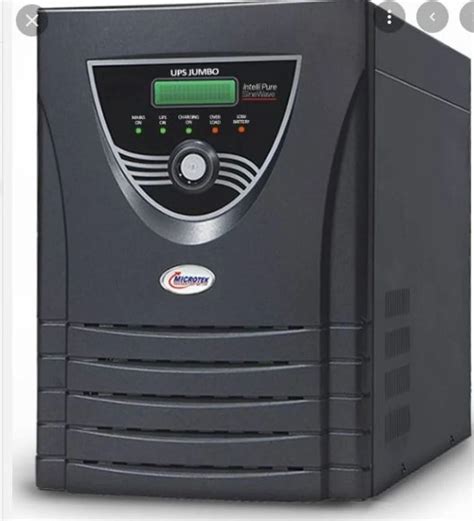
Microtek Inverter PCB Buying Guide: Balancing Price and Quality
When selecting a PCB manufacturing solution for your Microtek inverter, the interplay between pcb manufacturing cost and long-term reliability demands careful evaluation. Start by assessing the technical specifications of the board—look for certifications like ISO 9001 or IPC Class 3 standards, which indicate adherence to rigorous quality benchmarks. Reputable pcb manufacturing companies often provide detailed material breakdowns, revealing whether they use high-grade FR-4 substrates or premium copper layers for better heat dissipation.
While lower upfront costs might seem appealing, consider how component sourcing and production techniques impact durability. For instance, some suppliers cut pcb manufacturing business expenses by using subpar solder masks, risking premature failure in high-load scenarios. Instead, prioritize manufacturers offering transparent cost breakdowns that align with Microtek’s performance requirements. A 10–15% price premium for gold-plated connectors or automated optical inspection (AOI) could save you from frequent replacements.
To strike the right balance, cross-reference warranty terms with pricing. Companies confident in their pcb manufacturing processes typically offer 3–5-year warranties, signaling trust in product longevity. Additionally, verify if the supplier maintains real-time stock updates to avoid project delays—a hidden cost factor many overlook.
Don’t hesitate to request sample boards before bulk orders. Testing thermal stability under inverter-specific loads can reveal whether cheaper alternatives compromise on voltage regulation or signal integrity. Remember, the goal isn’t just to minimize pcb manufacturing cost but to secure a solution that aligns with Microtek’s operational thresholds while maximizing ROI through consistent performance.
Finally, leverage volume discounts strategically. Some pcb manufacturing companies provide tiered pricing for orders above 50 units, but ensure scalability doesn’t dilute quality controls. Pairing competitive rates with third-party quality audits creates a safeguards net, ensuring your investment delivers both affordability and reliability.

Expert Tips for Evaluating PCB Board Prices
When assessing PCB manufacturing costs for Microtek inverters, start by analyzing material specifications and production complexity. Higher-grade substrates like FR-4 or polyimide increase pcb manufacturing cost, but ensure better thermal stability—a critical factor for inverter performance. Always cross-reference quotes from multiple pcb manufacturing companies to identify pricing outliers, and ask for itemized breakdowns to spot hidden fees in copper cladding or multilayer designs.
Consider order volume as a leverage point. Many suppliers offer tiered discounts for bulk purchases, which can reduce per-unit expenses by up to 15%—especially relevant if you’re managing a pcb manufacturing business or large-scale projects. However, avoid overstocking; balance savings against inventory storage costs and potential model upgrades.
Scrutinize certifications like ISO 9001 or UL listings. Reputable pcb manufacturing firms invest in compliance, which often translates to higher upfront costs but minimizes long-term risks like warranty claims. For Microtek components, verify if the supplier adheres to the brand’s technical guidelines—non-compliant boards may void warranties despite lower prices.
Don’t overlook lead times and geographic logistics. Local manufacturers might charge more than overseas alternatives, but faster shipping and reduced import duties could offset the difference. Use tools like landed cost calculators to compare total expenses, including tariffs and transportation.
Finally, prioritize lifecycle value over sticker prices. A cheaper board with a 1-year warranty might cost more in replacements compared to a slightly pricier option with 3-year coverage. Check if suppliers offer repair credits or bulk rebates to stretch your budget further. By aligning pcb manufacturing cost with both immediate needs and long-term reliability, you’ll secure optimal pricing without compromising inverter efficiency.
Where to Find Genuine Microtek PCB Boards at Competitive Rates
When sourcing PCB manufacturing components like Microtek inverter boards, prioritizing authenticity ensures long-term reliability. Start by verifying authorized distributors listed on Microtek’s official website, as they adhere to strict quality protocols and offer traceable warranties. Many PCB manufacturing companies partner directly with brands like Microtek, providing certified replacements at standardized rates.
For competitive pricing, explore business-to-business (B2B) platforms such as IndiaMART or TradeIndia, where bulk buyers often negotiate discounts of 10–15% on orders. These platforms aggregate multiple PCB manufacturing business vendors, allowing you to compare quotes without compromising quality. However, always request certification documents and cross-check batch numbers against Microtek’s database to avoid counterfeit products.
Local electronics hubs, like Delhi’s Lajpat Rai Market or Mumbai’s Heera Panna, remain viable options for urgent purchases. While bargaining is common here, ensure sellers provide original invoices and validate the PCB manufacturing cost against current market averages. Reputable shops often display Microtek-authorized dealer logos, but verify their legitimacy via the brand’s customer service portal.
Another cost-effective strategy involves subscribing to inventory alerts on e-commerce platforms like Amazon or Flipkart. During seasonal sales or clearance events, prices for genuine boards may drop by up to 20%, especially when PCB manufacturing companies aim to clear older stock. Pair these deals with extended warranty offers for added value.
For enterprises requiring regular replacements, establishing corporate accounts with Microtek-approved suppliers can unlock tiered pricing. Many PCB manufacturing business partners offer loyalty discounts or free technical audits to optimize your inverter’s performance, indirectly reducing long-term maintenance costs.
Finally, consider refurbished boards from certified recyclers. While 30–40% cheaper, ensure they undergo rigorous testing by PCB manufacturing experts and include at least a 6-month warranty. This balances affordability with reliability, aligning with the broader goal of securing quality components without overspending.
Conclusion
When evaluating PCB manufacturing costs for your Microtek inverter, it’s essential to consider both immediate expenses and long-term value. The PCB manufacturing business operates on tight margins, which means price variations often reflect material quality, production scale, and warranty coverage. While opting for lower upfront costs might seem appealing, prioritizing reliability ensures you avoid frequent replacements or downtime.
Reputable PCB manufacturing companies typically offer transparent pricing models, aligning with the capacity and complexity of your inverter’s requirements. For instance, higher-capacity boards may incur elevated PCB manufacturing cost due to advanced circuitry, but they often deliver better energy efficiency and durability. Always cross-reference quoted prices with warranty terms—extended coverage can offset initial investments by reducing long-term maintenance expenses.
To maximize savings, leverage bulk purchase discounts or seasonal promotions, but verify stock availability beforehand. Partnering with certified suppliers ensures access to genuine components, safeguarding your inverter’s performance. Remember, the cheapest option isn’t always the most economical when hidden costs like shipping delays or inconsistent quality arise.
By balancing technical specifications, supplier credibility, and budget constraints, you can make informed decisions that align with both operational needs and financial goals. This guide’s insights aim to streamline your procurement process, empowering you to navigate the PCB manufacturing landscape with confidence in 2024 and beyond.
Frequently Asked Questions
What determines the price variation in Microtek inverter PCB boards?
PCB manufacturing costs are influenced by material grade, board complexity, and production volumes. Higher-capacity models (3kVA+) use multi-layer copper designs that increase pcb manufacturing business expenses by 12-18% compared to standard residential units.
How do warranty terms affect long-term costs?
Extended warranties from authorized pcb manufacturing companies cover labor charges and component replacements, reducing ownership costs by 30% over 5 years. Always verify warranty transferability if purchasing from third-party sellers.
Can I negotiate bulk pricing for Microtek PCB boards?
Most distributors offer 15-20% discounts for orders exceeding 10 units, as pcb manufacturing scales efficiently. Request volume-tiered quotes and compare prepaid shipping options to optimize logistics costs.
What certifications should genuine Microtek PCB boards have?
Look for ISO 9001 and UL certifications on the product label. Counterfeit boards often lack these markers, risking inverter performance and voiding manufacturer warranties.
How does PCB board quality impact inverter efficiency?
Premium FR-4 fiber substrates used in authentic boards ensure 97-98% thermal stability, while substandard materials may cause voltage fluctuations and 20%+ energy losses in six months.
Where to Find Quality PCB Manufacturing Services?
For certified pcb manufacturing companies offering tested Microtek-compatible boards, please click here: https://www.andwinpcb.com/pcb-manufacturing/. Validate real-time stock status and enterprise-grade warranties before ordering.
Are refurbished Microtek PCB boards cost-effective?
Factory-refurbished units with 6-month warranties save 25-35% on pcb manufacturing cost, but avoid third-party refurbishments lacking traceable repair histories. Cross-check serial numbers in Microtek’s database for authenticity.



